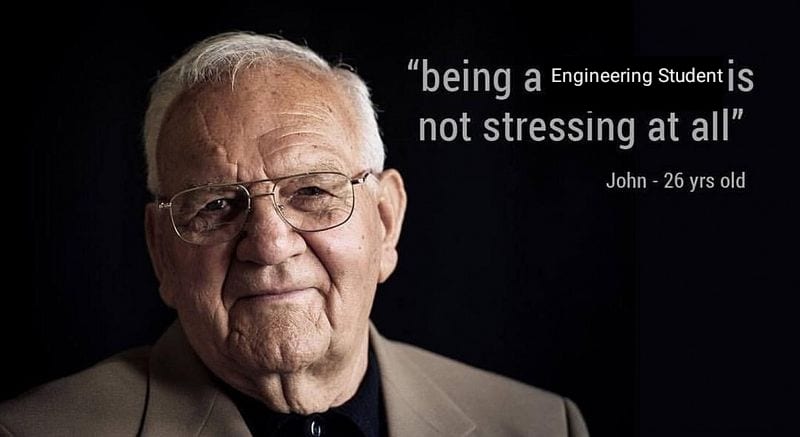We’re back team!
Themes for this semester: groups, proofs, Excel and…. IC4!
Semester 2 has been EngSci as its most raw form expressed through the likes of ENGSCI 255, ENGSCI 263 and a special feature from the compsci department: COMPSCI 225 (elective). The last paper is one I know everyone is looking forward to; ENGGEN 204!
Though a con for this semester is the full separation from our close BME peers. That’s also a con for you guys – there’s no turning to Nickolas’ blog for the awesome job he’s done on his course reviews. That means it’s all up to me.
If you’re anything like me, knowing how the course is assessed makes all the difference so we’ll start with that for each course.
ENGSCI 263 – Design and Modelling
This course is split into 2 strands: Design and Mathematical Modelling. The latter is low on the workload but has moderately difficult content while the opposite applies to the former.
Coursework
Design Strand
3 VBA Assignments, 5% total.VBA is just the language excel is compatible with.
2 Projects, 15% each.
One being a group Excel project with a presentation at the end. Good fun! The next project’s purpose is familiarising yourself with SolidWorks, also not bad. Both projects involve comprehensive reports making them all-rounders. Here’s a quick snap from the SolidWorks project.
Mathematical Modelling Strand
1 Modelling class exercise, 1%.
A worksheet to do in class with your team.
2 Modelling Assignments, 4% & 5%.
Super interesting content behind these assignments. They really do enhance understanding of the content taught in class.
Exam, 50%
4 Labs.
Not assessed but will show up in your exam so kinda assessed. I estimated these are worth about 12.5% from the 50% exam
Thoughts
You’ll walk out of this course having mastered Excel and SolidWorks. Juggling both strands leaves you admitting, often there is no correlation between the two halves. Although, once I passed this frustration, the course, in its entirety, was my overall favourite this semester. The balance between difficulty, group work and engagement ensured for a well-crafted course covering a wide range of content and skills in a manageable manner.
ENGSCI 255 – Fundamentals of Optimisation
The difference between this course and STATS 255 is the extension material. EngSci students have an extra tutorial every week on top of the STATS work.
Coursework
5 Assignments, 4% each.
The difficulty of these assignments varies greatly so best to be vigilant and start early.
1 Test, 20% (or 10% plussage applies here.)
Exam, 50% (or 60%).
Does not include extension material. Usually more challenging than the coursework but we’ll see how it goes!
Extension Material
2 Assignments, 3% each.
1 Test, 4%
Thoughts
As stated, the basics of operations research. 255 is expected to be restructured next year, I won’t go into much detail for this reason.
The course itself feels as if it may contain a lot of content, however, the content is backed by few key concepts that are not too tricky to understand. The main three topics were: linear programming, networks & project management and queuing. The former two topics were straightforward with a little attention while queuing questions and concepts required more detail.
COMPSCI 225 – Maths, No Coding!
Coursework
5 Assignments, 6% each
These assignments should not be taken lightly. They’re neither easy nor short.
1 Test, 15%
Thankfully, simple questions closely related to the tutorials and classwork. Studying really does pay off!
Exam, 55%
Thoughts
Although you may not take COMPSCI 225, I thought I’d throw in some quick thoughts anyway; if anything, in addition to our saviour, “studentcoursereview.com”, you have another opinion to base your future off. however, if you do roam around those reviews, you’ll notice a few trends when it comes to 225. Firstly, it’s true (from friends and such) the maths department does teach this course in semester 2 and the lecturer is absolute gold [thank you Paddy!!]. Granted both MATHS 255 and COMPSCI 225 are primarily proofs based courses, 225 is algorithm focused compared to 255, which may be beneficial in the coming years.
Every one of these lectures was engaging by providing a fresh view to algorithms, processes and calculations we use every day! I often made the effort to go (the classes were at 9am, otherwise I would have been first in line).
ENGGEN 204 – No Maths or Coding…?
Coursework
E-portfolio, 30% total.
Every week we answer a few short questions based on the lecture material. These have never taken me longer than half an hour to do.
1 Assignment, 20%.
This compromises of 3 stages. Firstly, we watched a few videos and wrote our thoughts and perspectives on them. Next, we were assigned 5 opinion pieces each to read and give feedback on. Lastly, we wrote a reflection on the experience as a whole.
Online Participation, 5%.
Fortnightly quizzes based on some reading materials.
Formal Report, 25%.
10 people given a month to write one report. Mess.
Oral Presentation, 20%.
About practically anything you wish to speak about.
Thoughts
Many people have strong opinions about this course. This is mainly because it is so different from regular engineering courses, even its prerequisite: 115. The first notable difference is no exam! “wow there must be sooo much coursework??” also not really true. This course is about quality writing; improve your writing and, for the most part, 204 will barely exist.
Overall
Compared to semester one, I felt this semester was application based with more hands-on work. The EngSci courses are less distinct and followed a similar trend (depending on your chosen elective). Furthermore, the group work made for an interesting change of pace; it was nice being able to share the same frustration with peers. Despite the heavy workload, I rate this sem higher than last! Although I may not feel the same way in a couple weeks when my exams are over.
